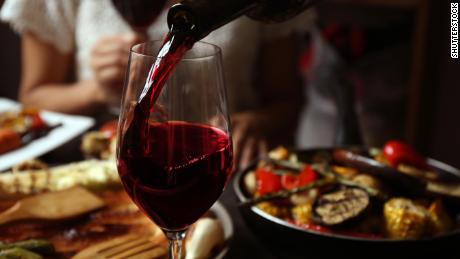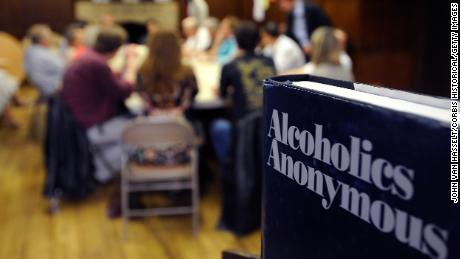The researchers analyzed available data on population-level alcohol use in 2010 and on cancer cases in 2020. They assumed a 10-year period between alcohol consumption and the appearance of cancer, since the types of cancer included in the study — lip and oral cavity cancer, laryngeal cancer and breast cancer (among females) — have lengthy development periods and previous evidence of a causal relationship with alcohol consumption.
Of the 741,300 new alcohol-attributable cancer cases diagnosed last year, men represented 568,700 cases, while women accounted for 172,600 cases, the researchers found. Most of these cancers were in the esophagus, liver and breasts. Nearly 47% of the alcohol-attributable cancers were linked to heavy drinking, which the authors defined as 60 or more grams of ethanol alcohol (the alcohol found in alcoholic beverages), or more than six drinks, per day.
Drinking 20 to 60 grams, two to six drinks, of ethanol alcohol per day, which the authors defined as “risky drinking,” represented 39.4% of alcohol-attributable cancer cases. Moderate drinking — defined as 20 or fewer grams, or up to two drinks, per day — contributed to nearly 14%, or 1 in 7, cases. And the highest rates of alcohol-attributable cancers were among men who drank 30 to 50 grams of ethanol alcohol per day, and in women who consumed 10 to 30 grams every day.
“We urgently need to raise awareness about the link between alcohol consumption and cancer risk among policy makers and the general public,” said study author Harriet Rumgay, a doctoral student at WHO’s International Agency for Research on Cancer, in a statement. “Public health strategies, such as reduced alcohol availability, labelling alcohol products with a health warning, and marketing bans could reduce rates of alcohol-driven cancer.”
The authors said they “found that alcohol use causes a substantial burden of cancer,” but other experts say multiple limitations could weaken the strength of that proposed relationship.
“These estimates, based on standard measures, are useful since patterns of alcohol consumption change over time,” wrote Dr. Amy. C Justice, a C.N.H. Long Professor of Medicine and professor of public health at the Yale School of Medicine, in a statement. Justice wasn’t involved in the study. “At a patient level, combining counselling and medication can be effective. However, achieving a solid understanding of the burden of cancer associated with alcohol use, underlying mechanisms, and how best to intervene rely on accurate measures of alcohol exposure.”
World Health Organization.
The recorded, unrecorded and tourist alcohol consumption might not account for all the ways alcohol can be consumed: It’s difficult to know whether a person who bought a bottle of alcohol consumed the whole thing himself, or took it to a party where multiple people drank some of it.
Where health, environment and genetics intersect
By assessing alcohol consumption at a population level, the study also doesn’t account for individual environmental, physiological, genetic and social risk factors for developing cancer.
hepatocellular carcinoma, the most common type of primary liver cancer — cancer that begins in your liver, rather than spreading to your liver from other organs.
“Hepatocellular cancer is the sixth most common cancer worldwide, and incidence is increasing. Alcohol use is well known to increase risk of hepatocellular cancer among individuals with obesity, who have hepatitis B or C virus infection, or who smoke,” Justice wrote.
American Cancer Society. Rates of hepatitis B and this liver cancer
have been high in the Asia-Pacific region, especially among men — as the study found.
There are several biological pathways by which drinking alcohol can lead to cancer development, the authors wrote, including DNA, proteins and how ethanol metabolizes and effects hormone regulation. Between 28% and 45% of East Asian people, for example, carry a variant of the ALDH2 enzyme that has been linked with a higher risk of developing cancers in the upper aerodigestive tract, the authors wrote.
aflatoxin, a toxin produced by mold that can grow on corn, peanuts and other grains.
Saudi Arabia and
Kuwait, where alcohol is banned and “religious-based policies have ensured that population alcohol consumption remains low and lifetime abstention rates remain high,” the authors wrote.
“What is new about this study is the global international comparison, broken down by sex and cancer type,” said Sadie Boniface, the head of research at the Institute of Alcohol Studies, for which the majority of funding comes from the Alliance House Foundation, an organization that promotes total abstinence from, and scientific study of, alcohol to aid the moral, social and physical welfare of communities. “The results are in line with other studies.”
Additionally, the study didn’t “consider the synergistic effect between alcohol and tobacco, which is reported as a true interaction for most upper aerodigestive tract cancers,” the authors wrote. The cancer estimates for 2020 might have also been impacted by the Covid-19 pandemic, which disrupted health systems and made some patients feel unsafe going to the doctor, the authors added.
Assessing alcohol consumption via specific biomarkers and therefore understanding how this and other factors relate to cancer risk is needed, Justice wrote. “The sooner we start accurately measuring alcohol exposure, the sooner we can understand the true excess burden of cancer attributable to alcohol and effectively intervene.”





